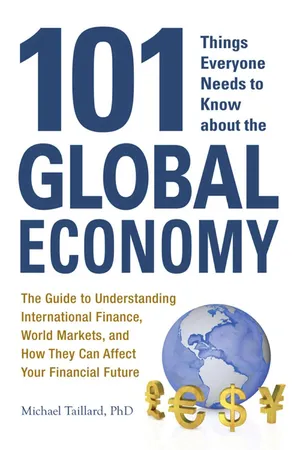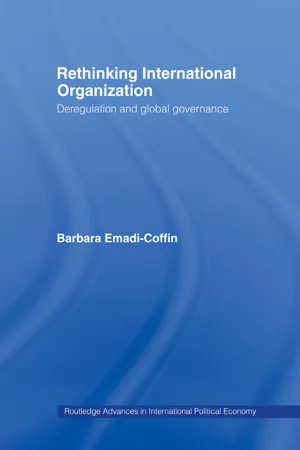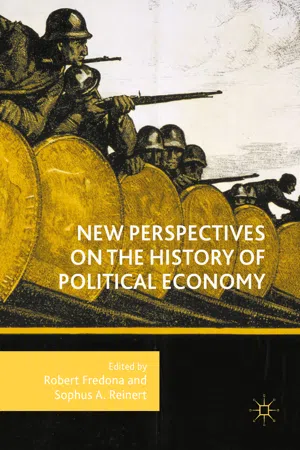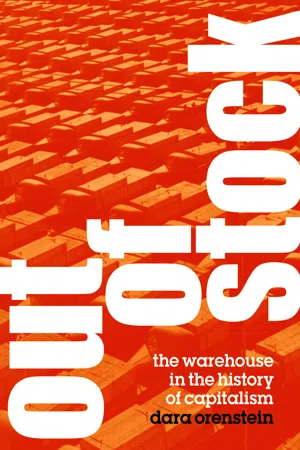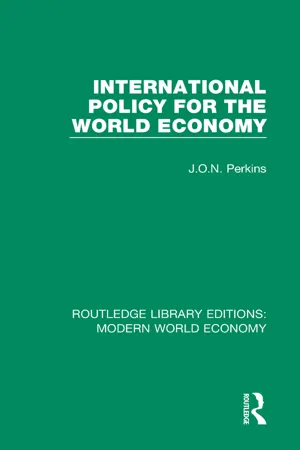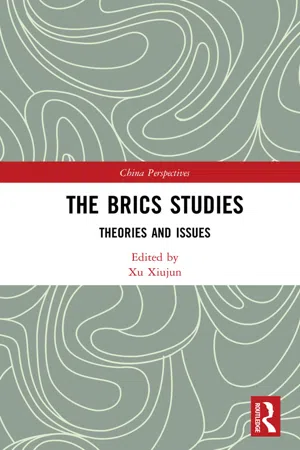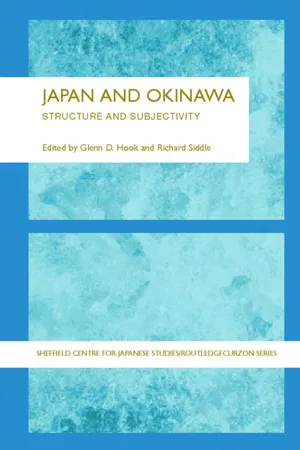Economics
Free Trade Zone
A Free Trade Zone is a designated area within a country where goods can be imported, manufactured, and re-exported without being subject to the usual trade barriers and customs duties. This encourages international trade and investment by offering businesses a more favorable environment for conducting trade. Free Trade Zones often have streamlined customs procedures and reduced regulations to facilitate trade activities.
Written by Perlego with AI-assistance
Related key terms
Related key terms
1 of 4
Related key terms
1 of 3
9 Key excerpts on "Free Trade Zone"
- eBook - ePub
Freeports and Free Zones
Operations and Regulation in the Global Economy
- Mark Rowbotham(Author)
- 2022(Publication Date)
- Informa Law from Routledge(Publisher)
This would suggest that one can have some of the tax incentives in a Free Zone, but not all of them. The US Foreign-Trade Zones allow for the re-export of goods from a Customs-controlled environment or the release of these goods as well as the manufacture of finished goods from a Customs-controlled environment into US Free Circulation, but they do not allow for Direct Tax incentives. They exist to encourage international trade by Customs-controlled incentives. The same is true of Freeports, although the UK Government is considering allowing the use of direct, as well as indirect, tax incentives to promote the use of the proposed UK Freeports.The outline of the tax incentive approach is as follows:- Freeports – Import Duty and VAT incentives;
- FTZs – Import Duty and Sales Tax incentives;
- EPZs – Import Duty and Sales Tax/VAT incentives plus Direct Tax incentives (Export Oriented);
- SEZs – Direct and Indirect Tax incentives.
The ideal Free Zone facilities should include a combination of both Direct and Indirect Tax incentives, plus the ability to manufacture goods in the zone for re-export or for release into national Free Circulation based on the Tariff Inversion principle as described earlier in the text. This flexibility gives far more incentives for companies to use the Free Zone for either production, storage or general operation purposes, such as international trading of services, thus allowing a wide variety of companies to use the zone while enjoying a wide variety of fiscal incentives.However, it must also be stated that, even within the above set of criteria and categories, there is no absolute demarcation between many of the Free Zone concepts. Each country where such Zones are located is host to different types of Free Zone depending upon national Free Zone policy as determined by national government. In the developing world, Free Zones have a much more varied function given that they are designed as vehicles for a combination of tax incentives in general as well as the encouragement of foreign inward investment. Foreign investment generated income for the country from external sources, and the concept of the EPZ encourages export-led economic growth. Therefore, government policies which engender such activity promote economic growth in their countries and thus seek to encourage greater levels of economic development in line with the policies of the UNCTAD. Indeed, the WEPZA, an organisation which was established by the UNIDO as an umbrella organisation coordinating and promoting the worldwide network of Export Processing Zones, existed as a means of promoting the development of EPZs on a global scale and encouraging their implementation and success. Although the organisation’s secretariat has relocated from its previous base in Arizona, US, to the UK, it is still possible to access many of its publications in its form of the erstwhile Flagstaff Institute, and to determine the extent to which it promoted the whole concept of both Export Processing Zones and Free Zones in general. (The website is www.wepza.org - eBook - ePub
101 Things Everyone Needs to Know about the Global Economy
The Guide to Understanding International Finance, World Markets, and How They Can Affect Your Financial Future
- Michael Taillard(Author)
- 2012(Publication Date)
- Adams Media(Publisher)
The most limited forms of trade integration are Free Trade Zones. These are designated areas within an otherwise closed nation in which free trade is allowed. Imports in the form of raw materials come in, are transformed into manufactured goods, and are exported tax-free and without government intervention (except, of course, for things that directly affect national defense, such as weaponry and other sensitive equipment). Goods for consumption can enter the Free Trade Zone but are not allowed to leave.Free Trade Zones can exist in cooperation between any two nations. Sometimes the term “zone” doesn’t refer to a specific geographic location but to a type of business. In Mexico, for instance, businesses called maquiladoras are allowed to operate in a manner similar to Free Trade Zones. They import raw material to produce manufactured exports with lower trade restrictions than other industries.Since these Free Trade Zones are designed for the import of raw materials to be processed into manufactured goods, they naturally attract factories and other manufacturing facilities. This has both benefits and detriments—lax regulations on trade and operations can be effective at attracting investment and employment, but they also attract companies and industries seeking to bend rules.Free Trade Zones are usually set up in two types of locations: underdeveloped regions and port regions.- When established in underdeveloped regions , the investment and production that the new and improved trade policies attract help develop the area. Companies create jobs, increase the nation’s production output, and increase gains from trade and wealth in the area, stimulating development for a higher quality of life. At least that’s the theory. The reason that Free Trade Zones are established near ports is a little bit less complicated: They’re very close to the shipping points through which raw materials will be imported and manufactured products exported.
Since ports and waterways naturally attract trade and industrialization, those organizations that operate there tend to be held to a higher standard for operations and working conditions. These are located in near proximity to other employers; consequently competition for workers is a bit higher since workers have more options and more ability to negotiate for total income. On the other hand, organizations in undeveloped areas, which have few other companies to which workers might apply, have greater negotiating power since the workers have few other choices of employment. This often results in poorer working conditions. - eBook - ePub
- Barbara Emadi-Coffin(Author)
- 2003(Publication Date)
- Routledge(Publisher)
5 Free Trade Zone policies in the Republic of Korea, the United Kingdom, and the People’s Republic of ChinaIn Chapter 5 , the national-level regulations required for the establishment of Free Trade Zones will be examined. The assessment of these national regulations which in part structure the development of the export processing zones in the Republic of Korea, the enterprise zones in the United Kingdom, and the special economic zones in the People’s Republic of China demonstrates that Free Trade Zones, as liberalized sectors of the national economy, are in part the result of ambitious policies of re-regulation by national governments. As noted in Chapter 4 , there are many common features shared by export processing zones, enterprise zones, and special economic zones. Each has the general goal of improving economic performance by enhancing growth and integration into global markets. The various types of Free Trade Zone are also similar in the types of goods produced, the investment incentives provided by national governments, the labor conditions found in the zones, and the purposes for which national governments have established them.The common denominator of manufactures produced in Free Trade Zones is their low-value added, labor-intensive character. The usual types of industries are electronic components, clothing, footwear, leather products, sophisticated metal products such as jigs and dies, optical goods, electrical appliances, plastics, toys, sporting goods and car parts (UNCTAD 1984; Wall 1976). A rough worldwide breakdown of industry composition in export processing zones in the mid-1980s showed that 30 percent of all firms produced electronics, while 20 percent of all firms produced garments or textiles (Currie 1985). The focus on these two industries is referred to as the “textile and electronics monoculture” (UN CTC and ILO 1988). These types of firms find it more profitable to transfer parts of their production activities to locations in which there are abundant supplies of low-cost labor. - Robert Fredona, Sophus A. Reinert, Robert Fredona, Sophus A. Reinert(Authors)
- 2018(Publication Date)
- Palgrave Macmillan(Publisher)
The global economic system is, however, critical for understanding contemporary special economic zones. Not that geography is unimportant: The relationship between the Mexican maquiladoras and the USA is obviously dependent on vicinity. But the creation of global marketplaces in labor, commodities, and consumer goods, as well as the radically cheaper costs of long-distance transit, has made the old style of regional customs competitions less important. In that sense, the early modern system of free ports—associated with the fragmented political landscape and dense maritime networks of Italy, the North Sea region, and the Caribbean —differs markedly from that of the contemporary free zone, such a conspicuous feature of the decolonized world. The new zones are an alternative to the import-substitution policies common among developing countries in the 1960s and 1970s. Regimes even target specific industries or sectors for “export-led growth,” so that the dizzying variety of zone names reflects diverse industrial and commercial goals. In general, willingness to endow a place with the proper cocktail of policies and infrastructure is the major factor in whether a special zone is successful or not. 24 Whether success is a good thing for local workers and the integrity of the host state is more doubtful. “How did a small, unremarkable Central American country with a turbulent political past (and, indeed, present) manage to become a leading exporter of clothing and apparel to the USA and, in doing so, create in excess of 100,000 new jobs?” So begins an awestruck article on the free zones in Honduras. The answer to the riddle? Honduras began establishing free zones in 1976. In 1998, its Congress declared the entire national territory a Free Zone Area, allowing private Zonas Industriales de Procesamiento to be established anywhere within state boundaries. Such zones are exempt from all federal, city, and commercial taxes- eBook - ePub
- Connie Carter, Andrew Harding, Connie Carter, Andrew Harding(Authors)
- 2010(Publication Date)
- Routledge(Publisher)
11The major incentives offered in EPZs have traditionally related to tax exemptions and duty-free imports. These are usually supplemented by exemptions from import quotas and the freedom to import capital and to remit profits. There may also be non-fiscal financial incentives such as export allowances or subsidized interest rates (ESCAP/UNCTC 1985: 21–27; UNCTC 1988: 274–75). Many EPZ projects include the provision of facilities in the form of transport links, factory buildings, commercial services and housing and social services for the workforce. In areas of low population, it may also be necessary to bring in workers from other regions, or to use foreign migrant workers (ESCAP/UNCTC 1985: 30–32). The development of such facilities is particularly characteristic of EPZs that are aimed at the industrialization of underdeveloped regions of the host state.12 Of especial significance to the early evolution of EPZs has been the harnessing of low-cost labour. Thus, the legal control of labour relations within the EPZs has acquired considerable importance as a means of preserving this advantage. Consequently, it is not uncommon to find that the employment rights of workers, and the right to establish trade unions or to take industrial action, are more limited within the EPZ than in the DTA (ESCAP/UNCTC 1985: 33; International Confederation of Free Trade Unions 1983: esp. paras 35–55; Kumar 1989: 112–13).It is common for the administrative regime of an EPZ to establish eligibility criteria for investments. Most often, these include a combination of one or more of the following: the export-orientation of the investment; limited or no local equity participation; substantial foreign capital investment; significant local content in production; employment promotion effects and possibilities for technology transfer (ESCAP/UNCTC 1985: 33–34). The authorization required for entry into the EPZ will usually be within the power of a specialized agency set up to administer the EPZ on behalf of the host state government. Some countries have a central authority for this purpose.13 Others have established separate authorities for the administration of EPZs.14 - eBook - ePub
Out of Stock
The Warehouse in the History of Capitalism
- Dara Orenstein(Author)
- 2019(Publication Date)
- University of Chicago Press(Publisher)
10 Such an account of wholesale displacement adds up on the streets of the present-day Rust Belt, but it shortchanges how capital flight has hinged on the disaggregation of the factory as much as its relocation, with manufacturing broken into stages of production distributed across supply chains. “Distributed production,” as the global assembly line is euphemized in business schools, has disassembled the Fordist social contract.The legal and cultural dimensions of this butcher job are on full display in the foreign-trade zone. Legally, zone operators built the foreign-trade zone in tussles with the Customs Service; culturally, they invigorated Congress’s Orwellian phraseology with “mental pictures” of what they called “live storage.” This aesthetic was dissonant in the thirties in celebrating machines over men, as in the poster of a ship’s crane and cargo net, with no hands in sight (fig. 4.1 ). What was a foreign-trade zone? In the plain English of historian David F. Noble, it was progress without people, a work camp for “shiftless pigeons,” or as the New York Times later described it, a waterfront laboratory for the discovery of “a new cheap and rapid method of processing.”11Figure 4.1. This silk-screen poster is one of three created to announce the debut of Zone 1 (another is shown in figure i.4 ). Harry Herzog for the WPA Federal Art Project, 1937.“A Kind of Shangri-la for the Canny and Thrifty Trader”
Before it took shape on the ground, the foreign-trade zone came to life on paper. The most frequently cited profile was from the regulations for the zone system, published in 1935:A zone is an isolated, enclosed, and policed area, under the supervision of a designated board of Federal officials, operated as a public utility by a corporation, in or adjacent to a port of entry, without resident population, furnished with the necessary facilities for lading and unlading, for storing goods, and for reshipping them by land and water; an area into which goods may be brought, stored, and subjected to certain specified manipulation operations. If reshipped to foreign points the goods may leave the restricted trade zone without payment of duties and without intervention of customs officials, except under certain conditions. Such products cannot, of course, leave the trade zone for domestic use or consumption without full compliance with existing customs laws. Goods may not be manufactured or exhibited in such an area. The area is subject equally with adjacent regions to all the laws relating to public health, vessel inspection, Postal Service, immigration, and to the supervision of Federal agencies having jurisdiction in ports of entry, including customs, to a limited extent.12 - eBook - ePub
- James Oliver Newton Perkins(Author)
- 2017(Publication Date)
- Routledge(Publisher)
As the difficulties in the way of further progress in the general freeing of world trade become clearer to all, it is naturally becoming more common for groups of like-minded countries to seek ways of freeing trade among themselves. For sometimes groups of countries can find mutually satisfactory forms of concessions that they can offer to each other, but which they would not feel to be a satisfactory form of bargain if the concessions had to be extended to the whole world.There are provisions within the General Agreement on Tariffs and Trade for the setting up of Customs Unions and Free Trade Areas; and members may make certain types of preferential tariff concessions to other members of groups setting up such regional areas of freer trade. The members of a customs union (such as the European Economic Community) work towards the complete freeing of their trade with one another and the setting up of a common external tariff against goods from the rest of the world—which under Gatt is supposed to be at about the ‘average’ level (in some sense) of the former tariffs of the constituent members. The members of a free trade area (such as the European Free Trade Association) seek merely to liberalize substantially all their trade with one another, but members may still retain their own individual tariffs on their imports from the rest of the world.The principal problems arising from such arrangements will be discussed in the following chapter: here the main reason for introducing the subject is to emphasize that when efforts to free world trade more generally come up against serious obstacles to further advance—as seems now to be occurring—attention is likely to be focused increasingly on efforts to liberalize trade over more limited groups of countries, so far as this can be reconciled with countries’ international obligations (under Gatt especially). If such arrangements are well chosen there is no reason why they should not promote the main aim (shared by all countries) of promoting the general expansion of world trade and incomes: but there is always the danger that any such limited arrangements may divert trade into less desirable directions (from the viewpoint of the world as a whole, and possibly also from that of some, or even all, the member countries of the regional groups). - eBook - ePub
The BRICS Studies
Theories and Issues
- Xu Xiujun(Author)
- 2020(Publication Date)
- Routledge(Publisher)
9 Construction of Free Trade Zones in the BRICS countries Cai ChunlinEconomic globalization and foreign trade zone (FTZ) construction are two megatrends in the global economy today. The financial crisis has led to a growing trend of international trade protectionism. To avoid that, economies in the world are accelerating regional economic cooperation of different levels in varied forms to tighten links with one another. By allowing the infiltration of economic activities, each economy can benefit from others through regional cooperation. Countries and regions, including the United States and Europe, vigorously promote United States-Mexico-Canada Agreement (USMCA) and Comprehensive Progressive Trans-Pacific Partnership (CPTPP) negotiations as part of an effort to exert influence on the global economic governance rules system. As their institutional power in developing international economic and trade rules are at the risk of being weakened, the BRICS countries, as representatives of emerging economies, have started to view the development of FTZs as an important means to enhance their economic strength and international influence. Based on their respective realities, the five countries have successively developed their FTZ strategies. An analysis of the strategic interest and conflicts of interest related to the establishment of FTZs among the BRICS countries and the provision of constructive suggestions will help China strengthen its economic and trade relations with the other BRICS countries and elevate the level of economic and trade cooperation among the five countries.1. FTZ development strategies of the BRICS countries
1.1 Brazil’s FTZ development strategy
Brazil’s FTZ development strategy mainly includes the following three aspects.First, leveraging regional integration as a means of enhancing its strength and position in the multilateral trading system. As a robust facilitator of FTZ construction, Brazil believes bilateral and regional trade agreements are a useful complement to the multilateral trading system in that they can effectively strengthen market integration, enhance the role of trade in economic development and enable domestic enterprises to achieve economies of scale. By cooperating with developing countries at the regional level, especially through preferential trade arrangements, Brazil sought to enhance its position in the Doha Round negotiations on the multilateral trading system. Such an aim is particularly reflected in the negotiation of preferential trade arrangements for developing countries. - eBook - ePub
Japan and Okinawa
Structure and Subjectivity
- Glen D. Hook, Richard Siddle(Authors)
- 2003(Publication Date)
- Routledge(Publisher)
No longer able to rely upon the national government to revitalize the local economy on a long-term basis, prefectural and other subnational political authorities throughout Japan are being forced to develop their own economic strategies. In certain parts of Japan, the pressures of financial globalization, as seen in the fluctuation of the yen exchange rate, mean that subnational political authorities must respond to local industry moving production offshore as a result of the increase in the value of the yen or to take advantage of cheap labour, markets, and so on. As the base for manufacturing in Okinawa is so weak, however, industries are not pushed offshore due to global pressures forcing up the value of the yen, but neither is the prefecture able to benefit from a low valued yen, except for tourism. Thus, the pressures of globalization, with the accompanying demands for deregulation and liberalization, and the economic slump following the bursting of the bubble, have created a situation where prefectural and other subnational authorities are taking on an increasingly proactive role in order to stimulate economic growth on the local level. In the case of Okinawa, the prefecture is seeking to enhance economic self-reliance by developing industries with the potential to export their products to mainland Japan as well as to other parts of East Asia, exploit the prefecture's natural resources to stimulate tourism, and attract mainland and other information technology companies.Okinawan Free Trade Zones and the Special Free Trade Zone
In this context, Free Trade Zones (FTZ) provide an opportunity for Okinawa to develop industries with the potential to export their finished products to Japan and further afield. However, the structural weakness of the Okinawan economy in terms of both manufacturing and finance is such that a transborder economy can only be developed through the active role of both national and prefectural governments. In particular, electrical machinery and transportation machinery, which are two of the key manufacturing industries for Japan in terms of exports, are almost non-existent in Okinawa. In this sense, moves to strengthen a transborder economy and other activities are taking place ‘top down’, through the national and prefectural governments, rather than ‘bottom up’, through business and industry, as a way to improve Okinawa's competitiveness in the face of globalization.FTZs go back to the days of the US's administrative control of Okinawa, although none of them has come close to matching the ideal of a ‘free trade’ zone, akin to the situation in say Hong Kong. The first FTZ was established in October 1959 and centred on the port of Naha. In this case, pressure on the US administration exerted by the Ministry of International Trade and Industry (MITI) hindered any opportunity for the FTZ to emerge as a competitor to mainland industries. The government's policy staunchly resisted Okinawa playing any role similar to Hong Kong (Howell 2000). With the return of Okinawa to Japan in 1972, the zone lost any possibility of becoming a ‘Free Trade Zone’ and was given legal status under Japanese law through the enactment of the first Okinawa Development Promotion Special Measures Law. Okinawa was put under full Japanese sovereignty on return, including customs laws making ‘free trade’ little more than an empty slogan. Then, following the 1982 revision and implementation of the law, the Okinawa Development Agency designated a second, new Naha FTZ near the airport, Kagamizu, which started operation in July 1988. Finally, the third revision of the law in March 1998 called for the strengthening of the existing FTZs and the establishment of a third, 100 hectare Special FTZ, the Nakagusuku New Port Industrial Complex, in Nakagusuku, on the east coast of the main island. The revised law also called for the development of information technology industries and the further strengthening of the tourist industry. In none of these cases, however, has Okinawa been given the freedom to emerge as a ‘Free Trade Zone’ — that is, a zone allowing for ‘free trade’ with the world — and has remained as a peripheral, dependent part of the Japanese political economy.
Index pages curate the most relevant extracts from our library of academic textbooks. They’ve been created using an in-house natural language model (NLM), each adding context and meaning to key research topics.
Explore more topic indexes
Explore more topic indexes
1 of 6
Explore more topic indexes
1 of 4

